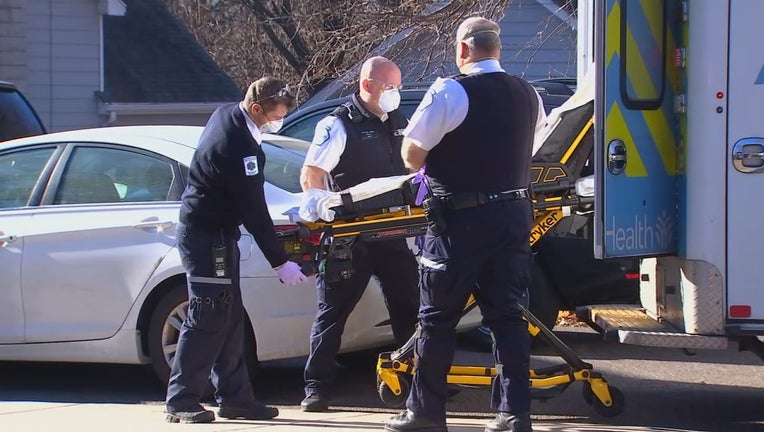Inside the ambulance: EMS crews cope with COVID-19 waves, influx of mental health patients

An Allina Health EMS crew responds to a call amid the COVID-19 pandemic in the Twin Cities metro. (FOX 9)
MINNEAPOLIS (FOX 9) - For the last several weeks, 25 ambulances provided by FEMA have helped deal with the crush of COVID-19 cases in the Twin Cities metro that pushed emergency crews to the limit.
With that surge subsiding, but numbers still high, FOX 9 got an inside look to see how ambulance crews are coping.

EMS crews struggle with COVID-19 waves, influx of mental health patients
For the last several weeks, 25 ambulances provided by FEMA have helped deal with the crush of COVID-19 cases in the Twin Cities metro that pushed emergency crews to the limit.
"I wish someone could tell us with certainty if the storm was over, but I don’t think we can and we just need to be prepared," said Dr. Andrew Stevens, Allina Health EMS Chief.
Dr. Stevens spends part of his time working in the ER, the rest of the time he is focused on the field.
"It was reported someone that already has a history of bad respiratory disease that is exhibiting signs of COVID," said Stevens, discussing a patient call.
As the chief of Allina Health’s emergency medical service, he supervises ambulance crews and helps them out, too.
"It’s possible they’re on a ventilator already, so that puts it at risk for COVID being aerosolized on scene," said Stevens, describing the call.
The surge in COVID calls began in late October and by mid-November, ambulance runs were through the roof both from 911 and transfer runs taking patients from hospitals to hospital, a process called load leveling.
"We’ve never had this level of insanity, I guess you could say," said Lou Echeverria, a dispatcher for Allina.
Echeverria coordinates those transfer runs inside the Allina’s 911 dispatch center. He calls it a constant chess game. It has slowed, but he’s not expecting that to last.
"It’s just such a wave of going up and down that I’m expecting within the next week, week and a half, our numbers are going to really shoot up," said Echeverria.
"That all got better recently, I think the FEMA teams helped, but they’re leaving today so we’ll see how that plays out in the future here," said Joshua Turek, an EMT.
Turek and Rachel Carson are EMTs who make those runs. However, they’ve noticed a concerning trend that they feel has been overlooked.
"So the number of mental health patients has increased quite a bit," said Turek.
They says those patients are the mental health victims of COVID isolation, especially kids, who have tried to kill themselves.
"One of my co-workers picked up a kid as young as 8, 12-year-olds, 14-year-olds, we transport them regularly," said Carson.
The statistics show both 911 runs and transfers dropping since Thanksgiving, but what ambulance crews experience, don’t always reflect that.
"Within the last couple weeks, actually, is the most I’ve seen," said Eric Arvison. "Usually it’s one or two cases a day, now it’s three or four."
They’re hoping they may have seen the worst, knowing that is impossible to predict.
"It leaves an uncertainty that, just like waves on a levy that we’re full, the levy’s full and you don’t know when the next wave is coming, how big it is," said Stevens.

